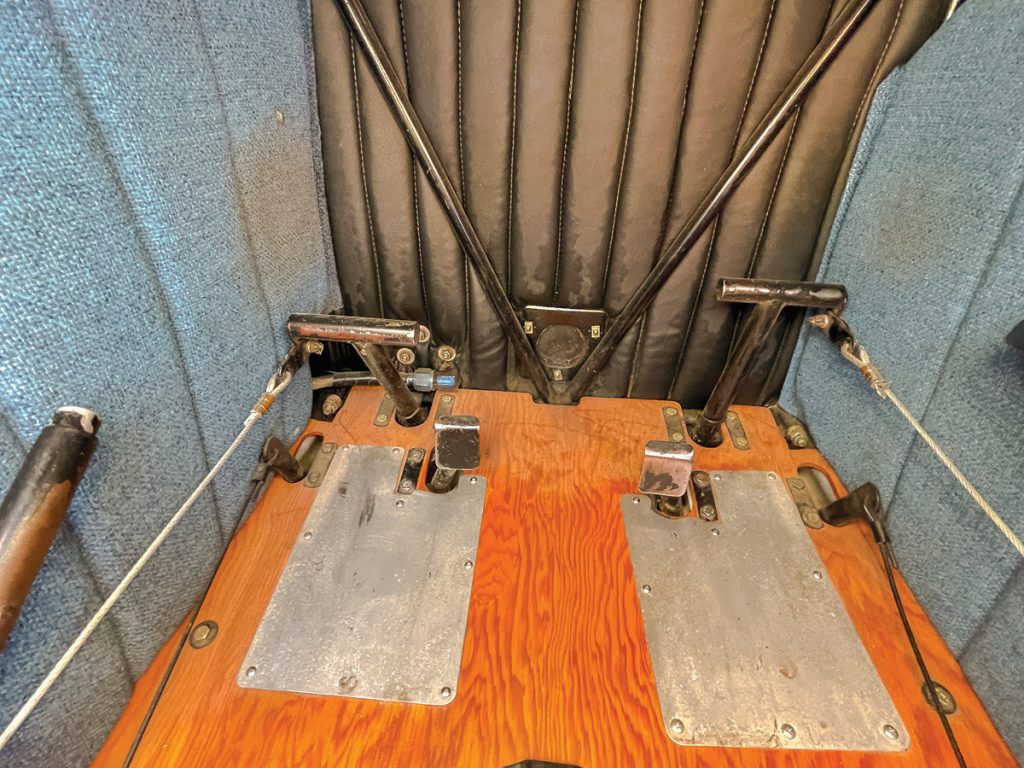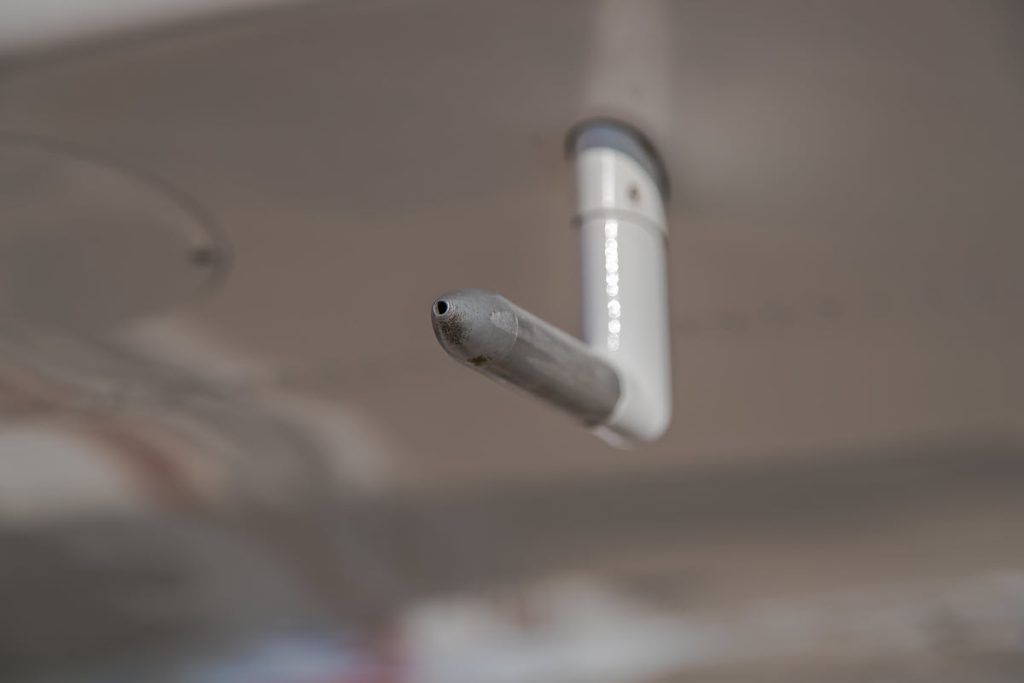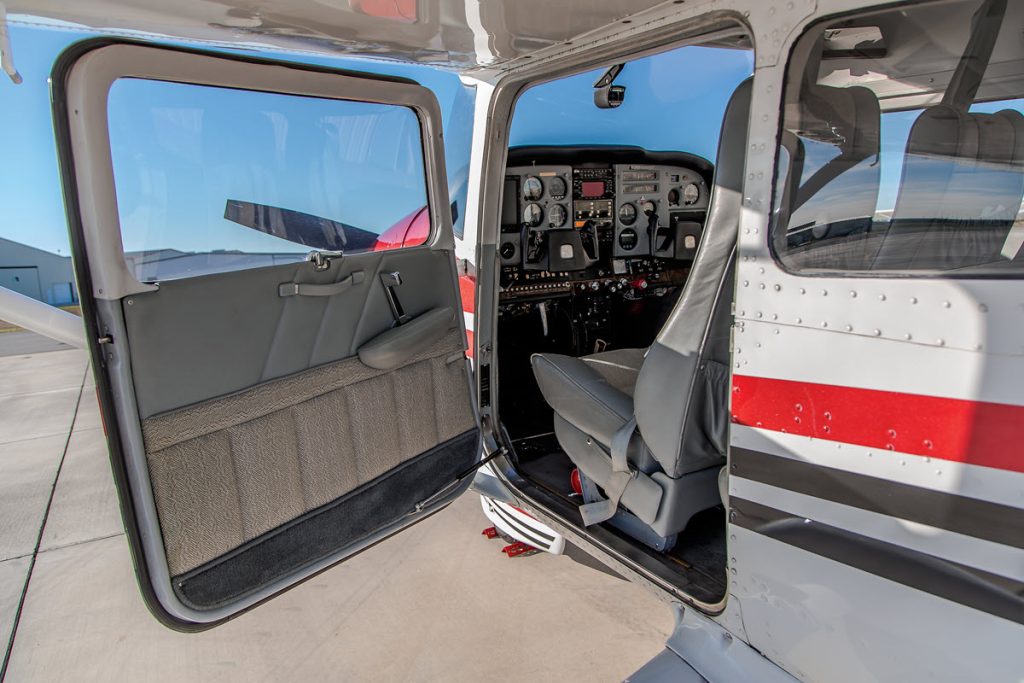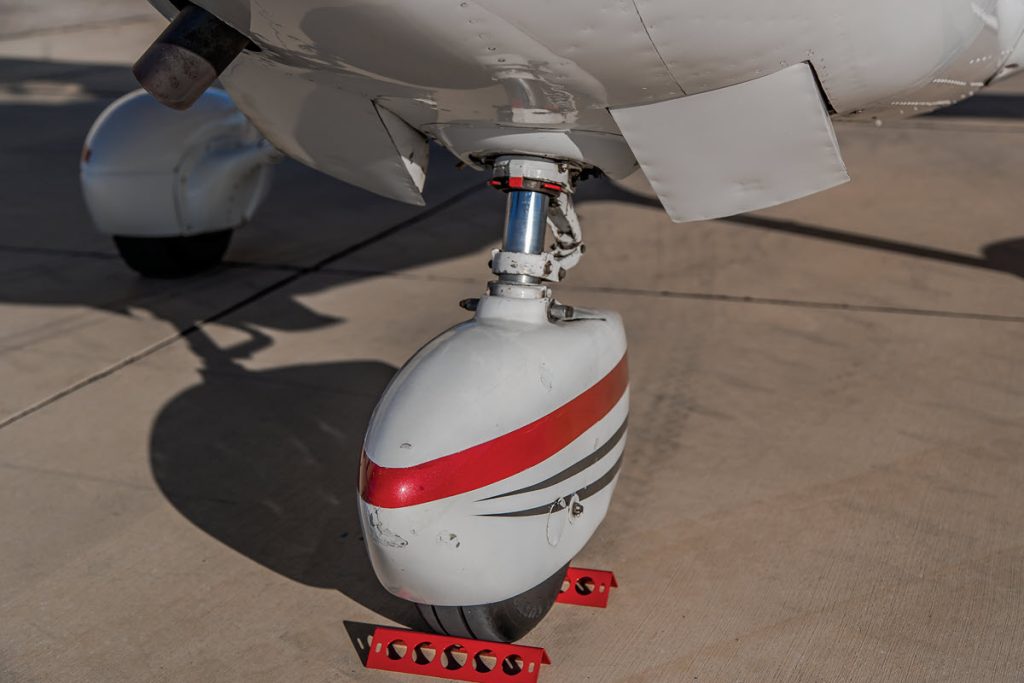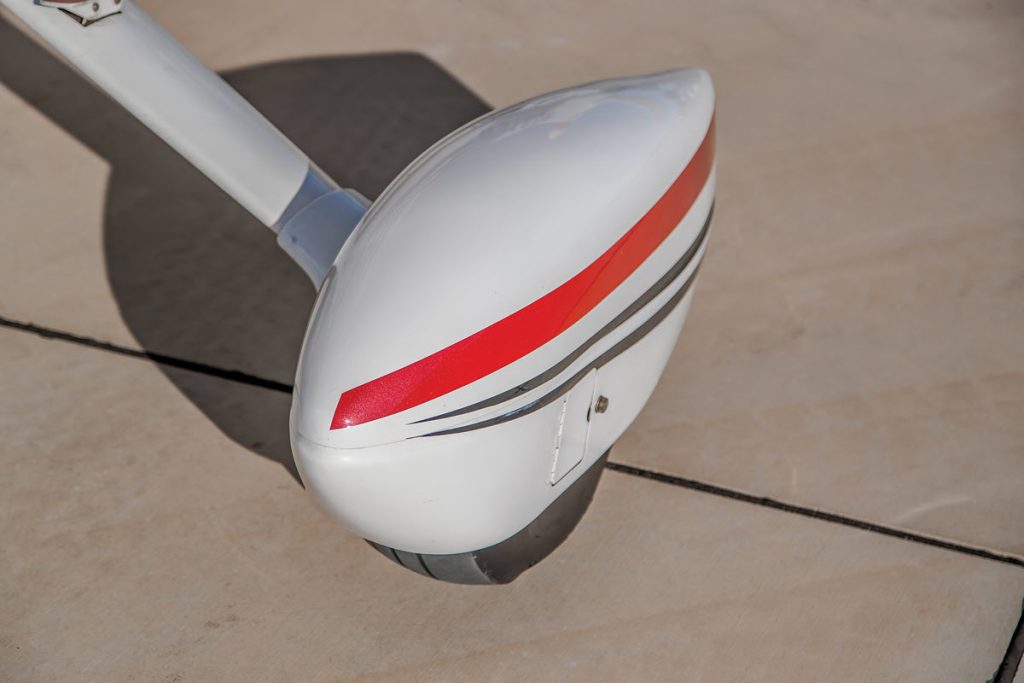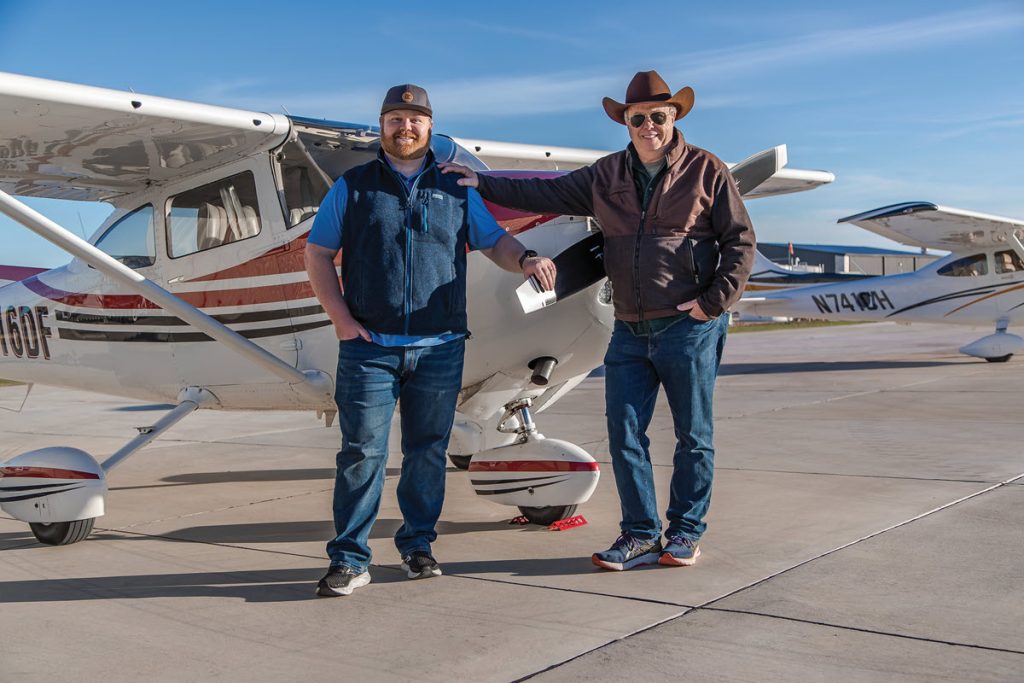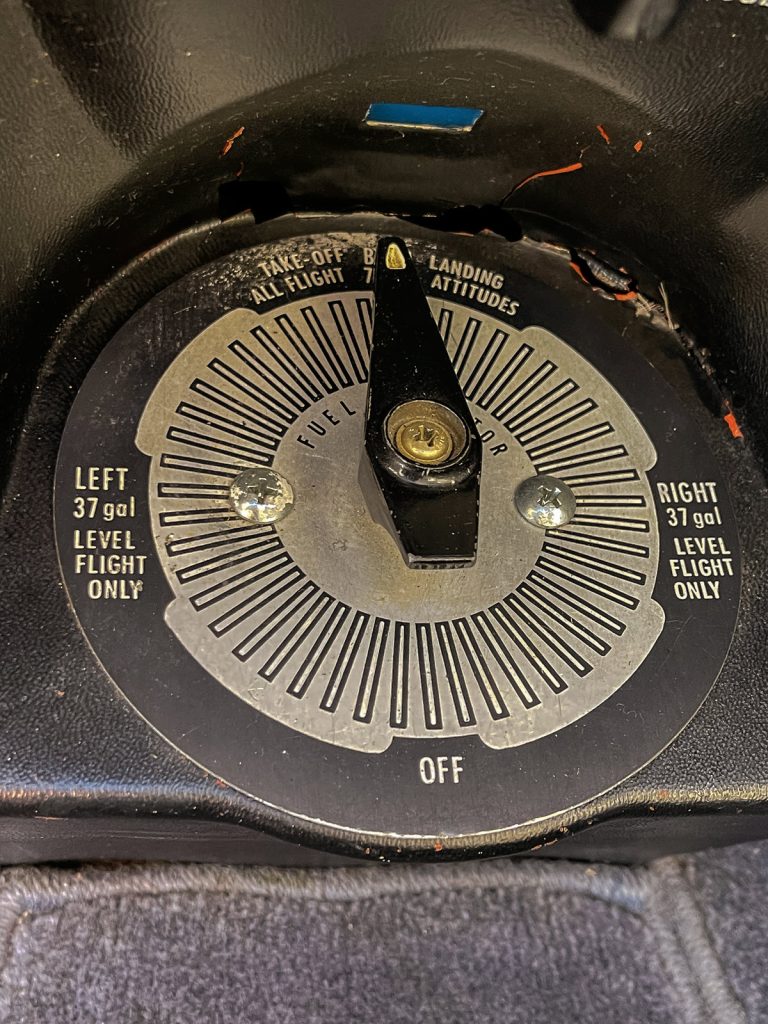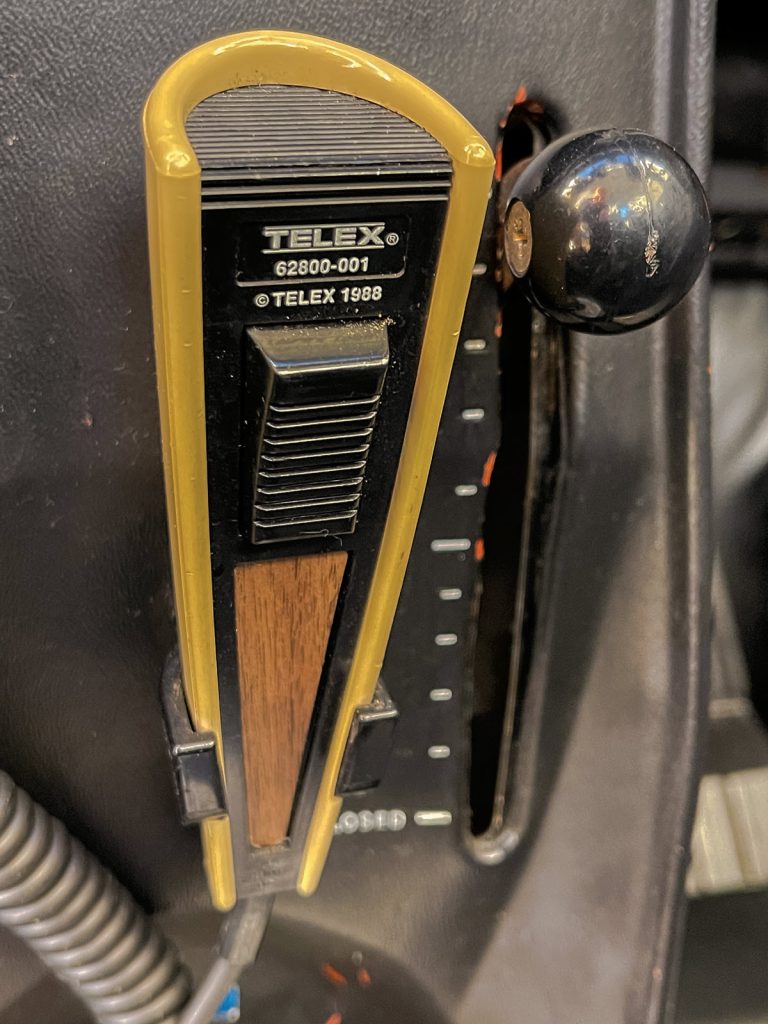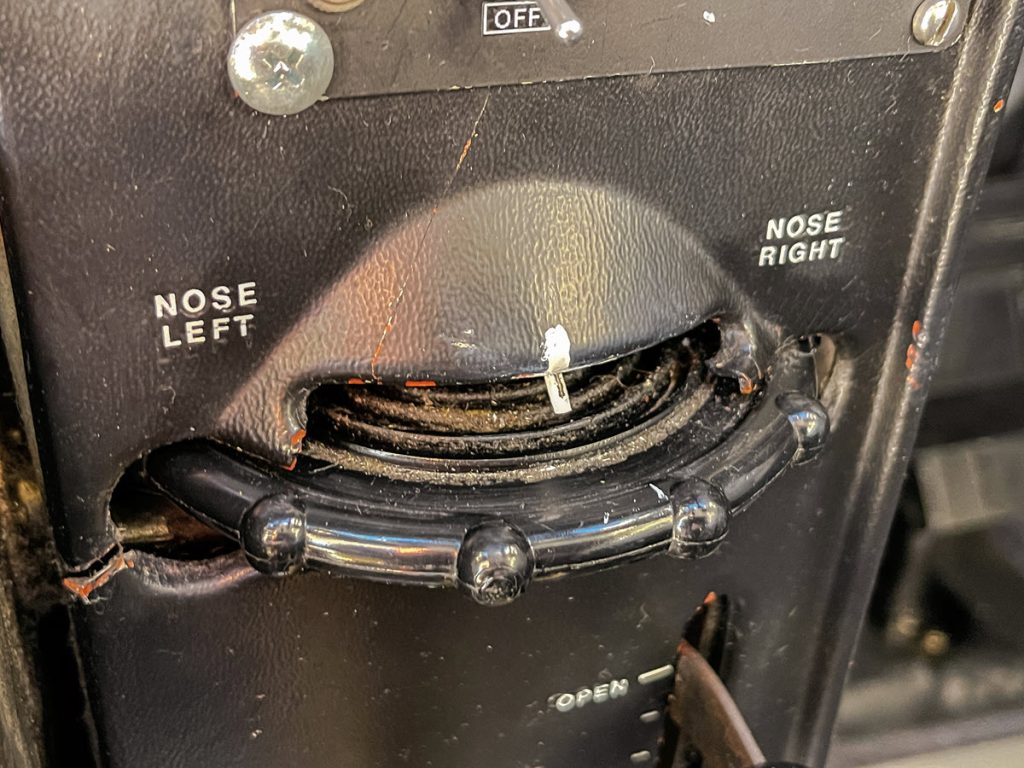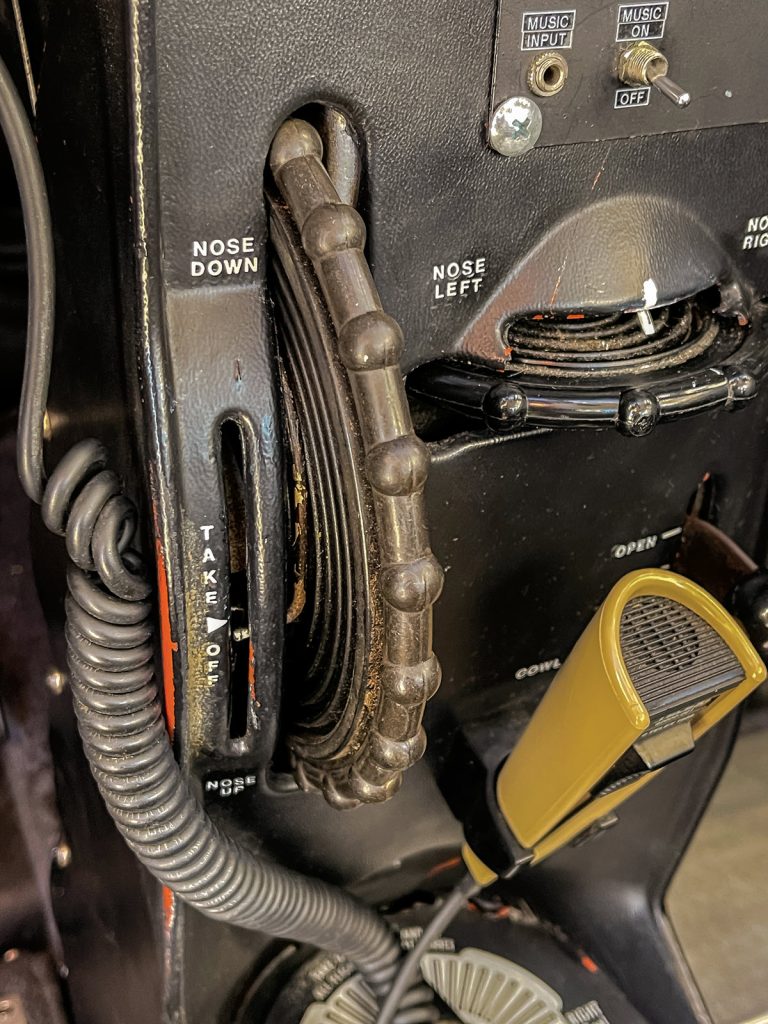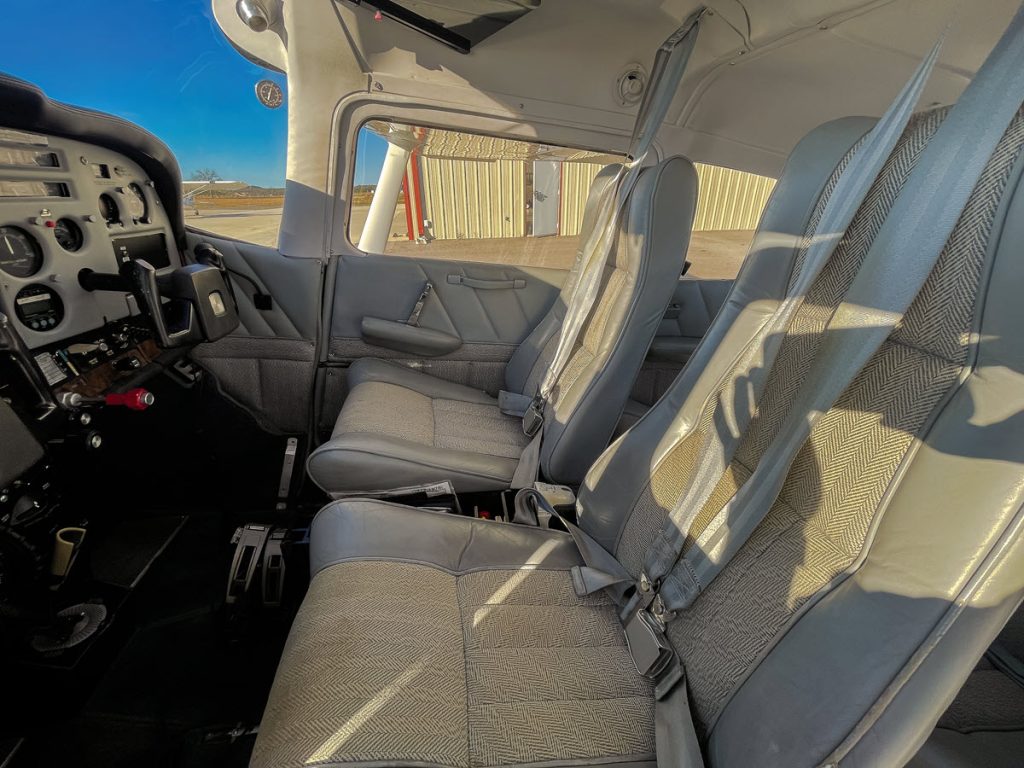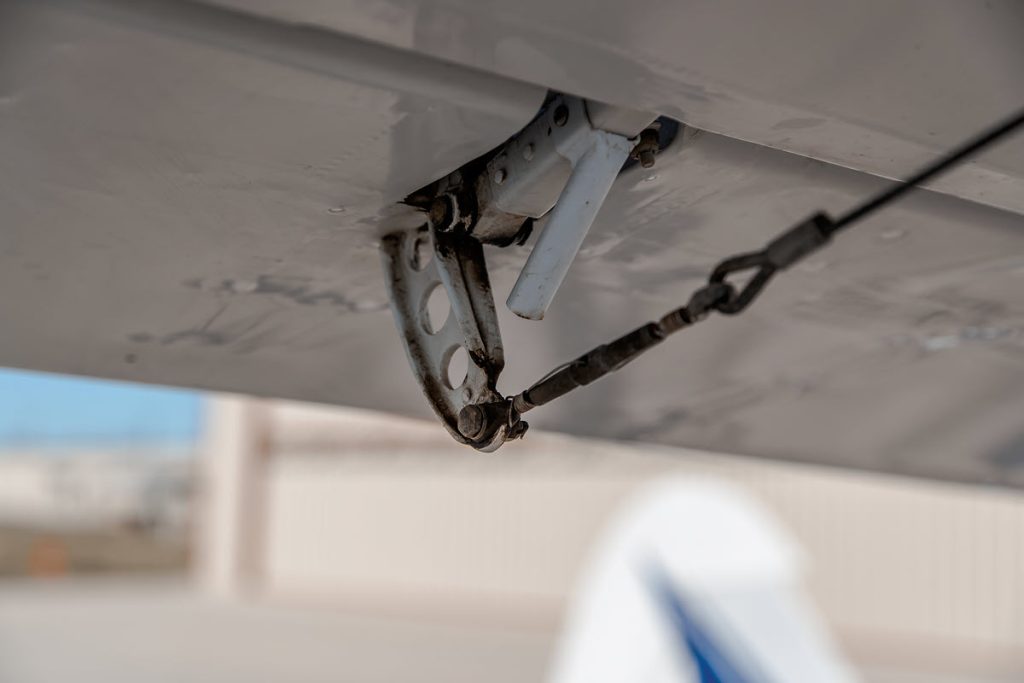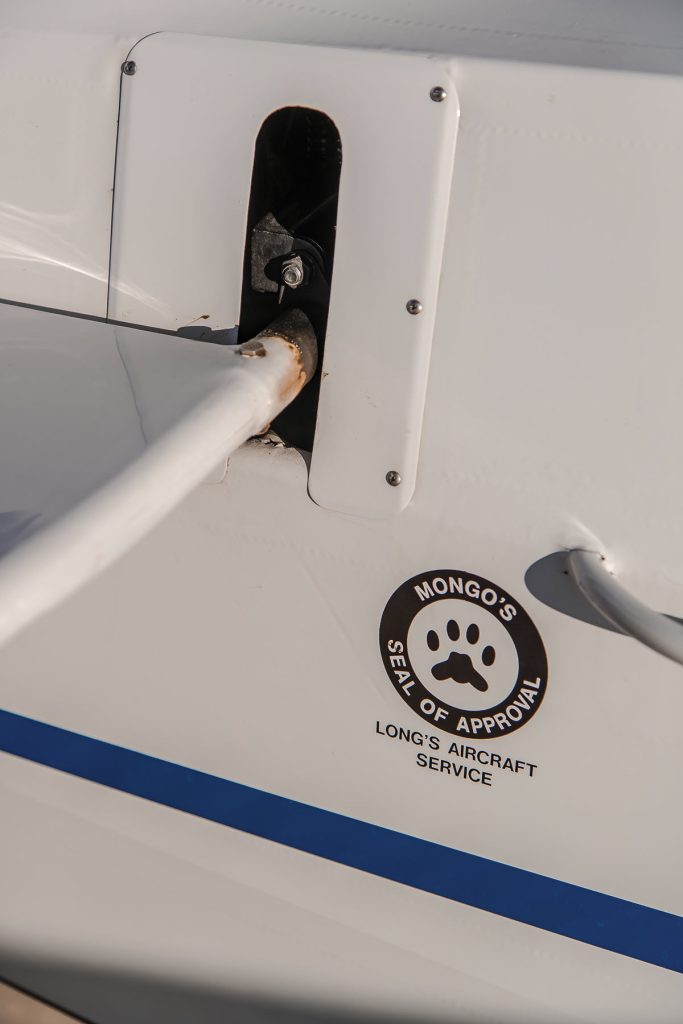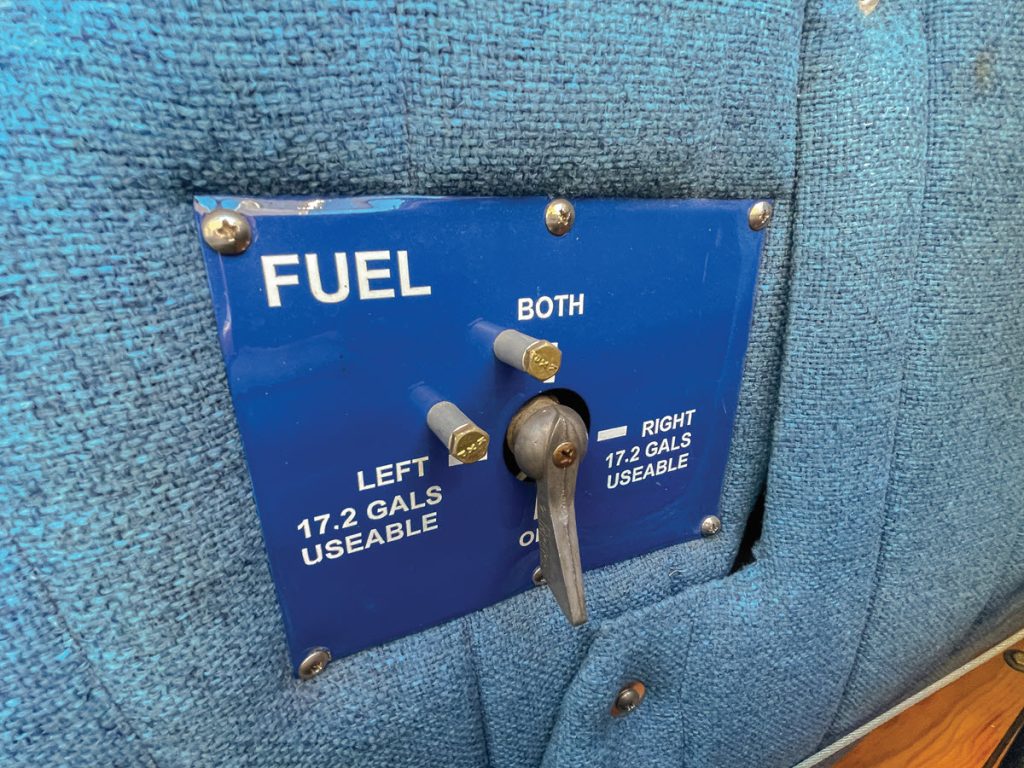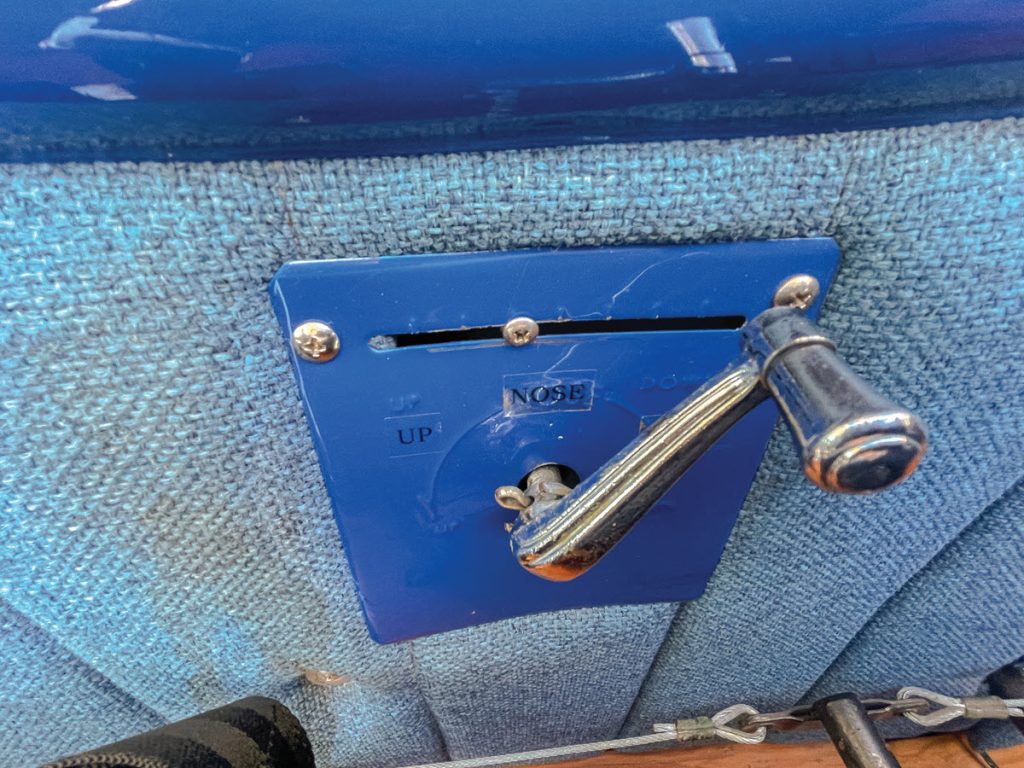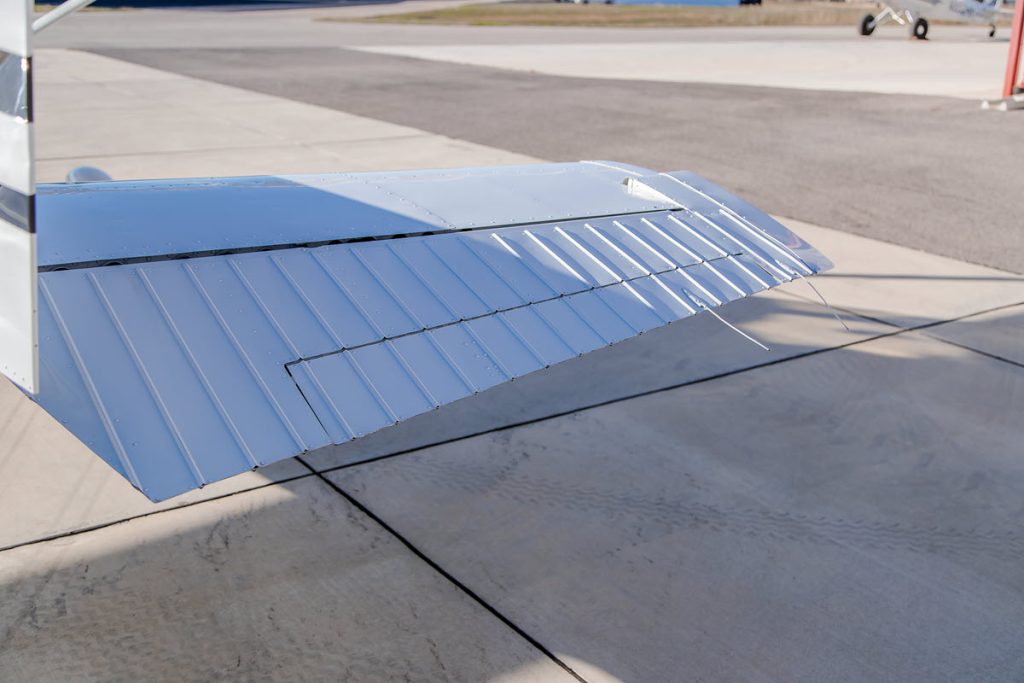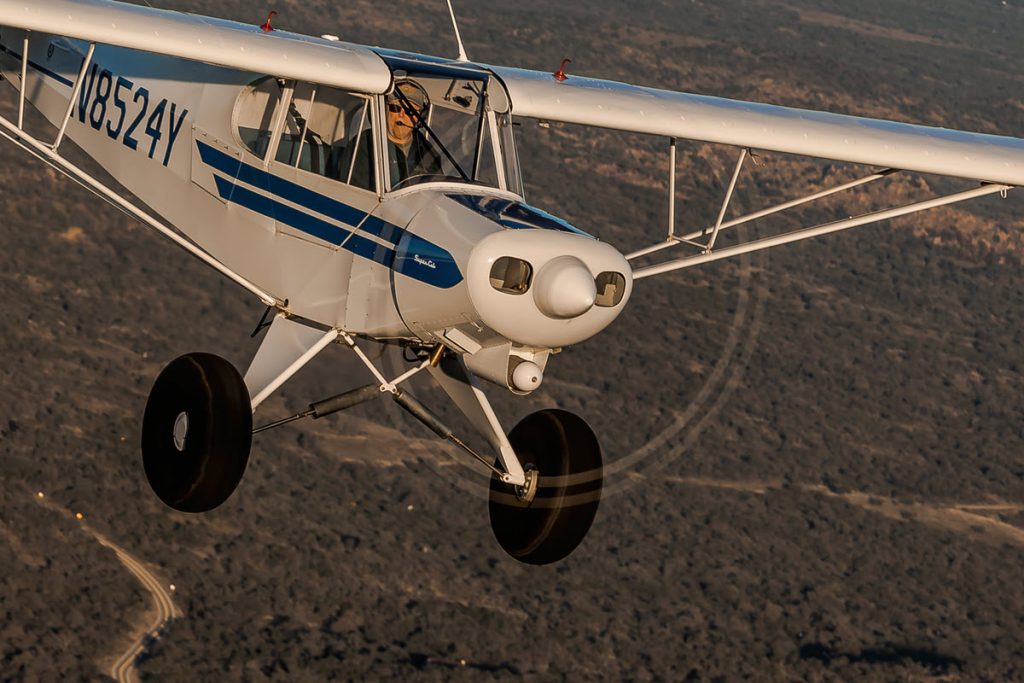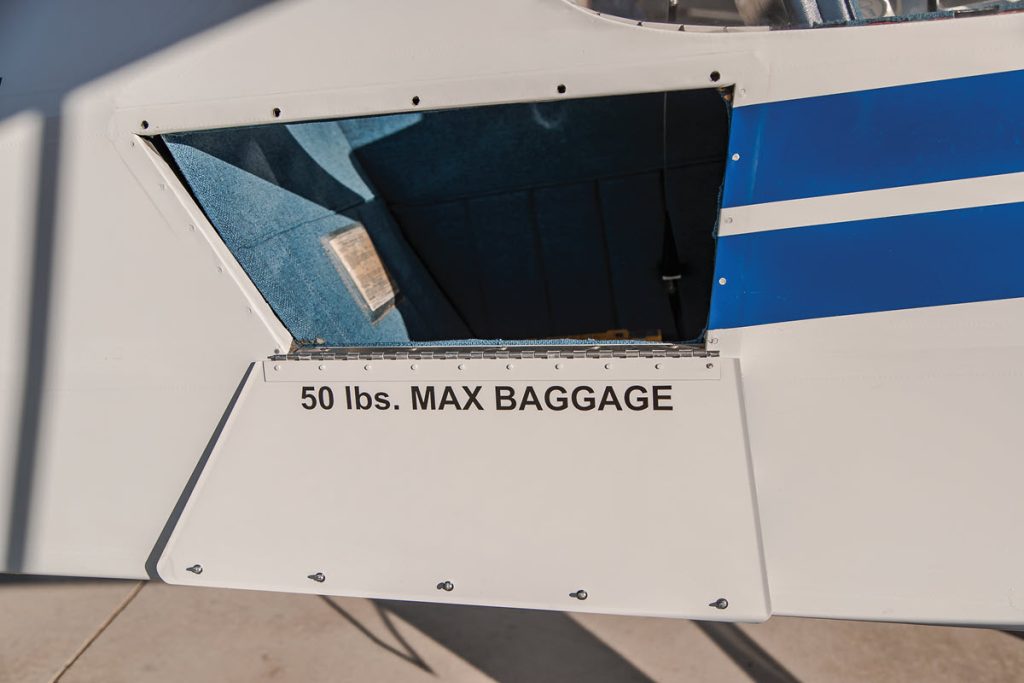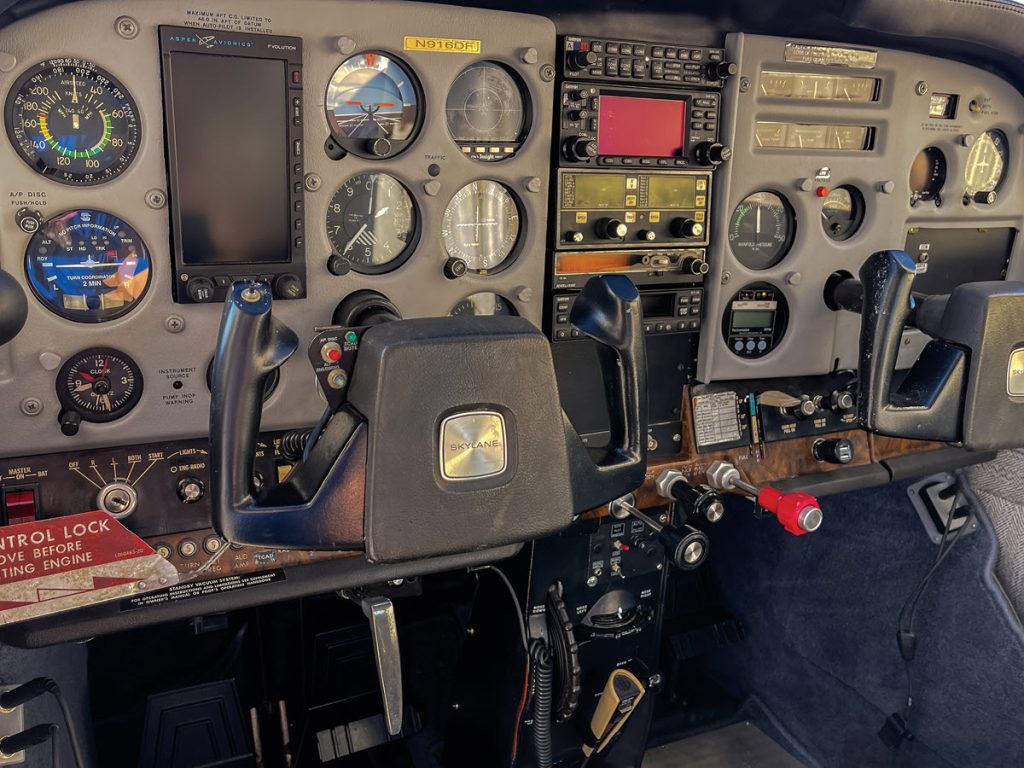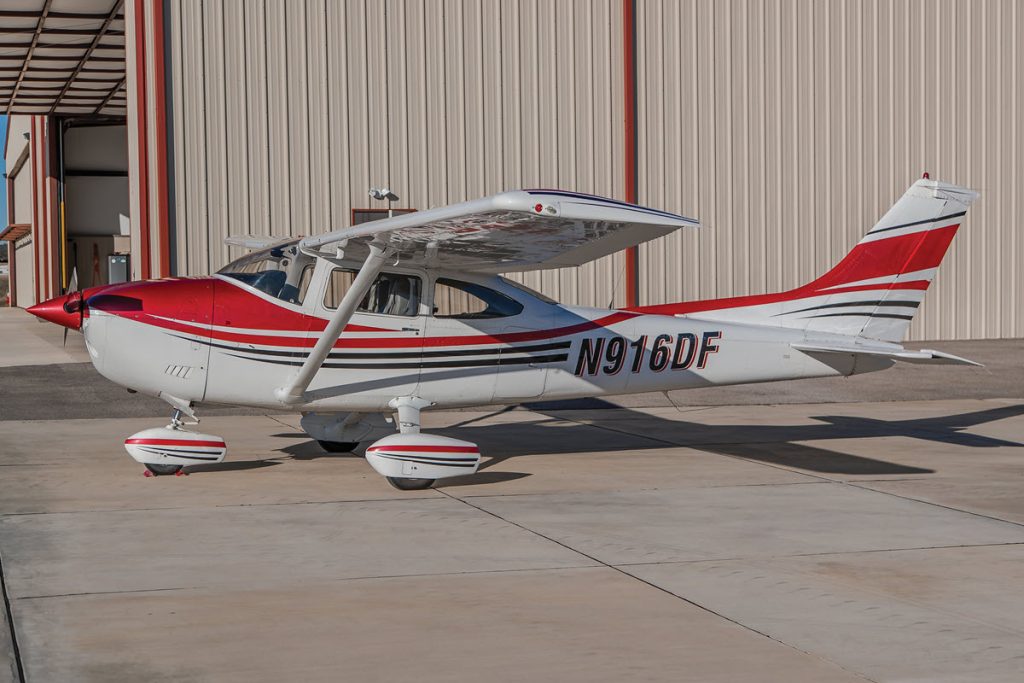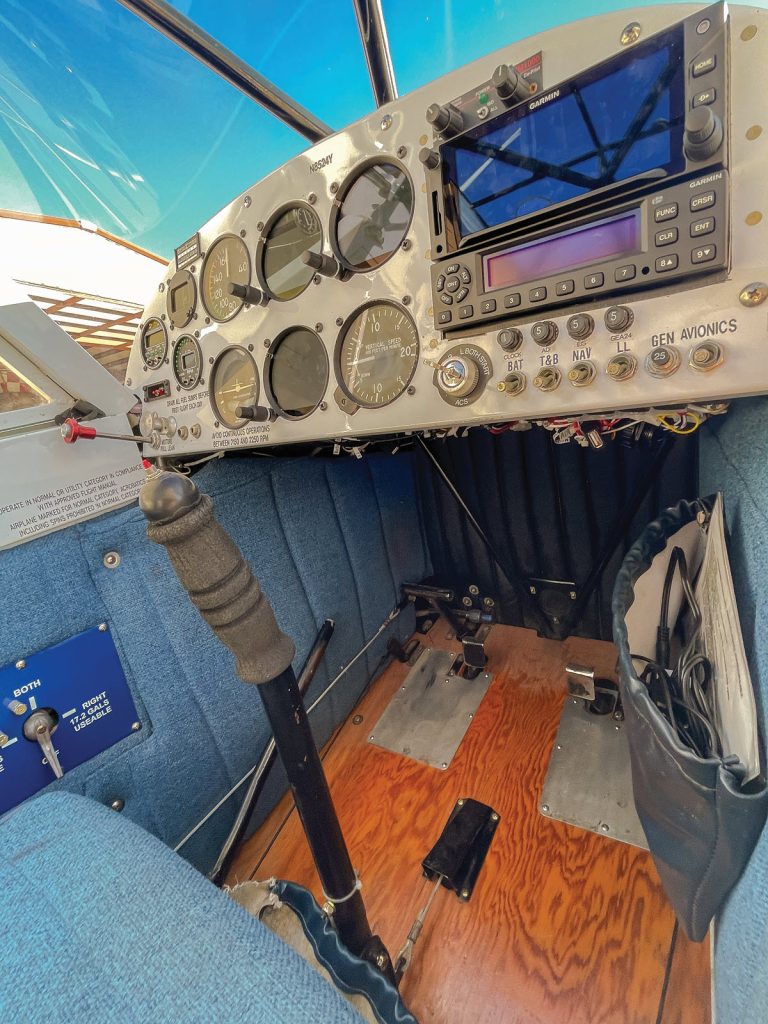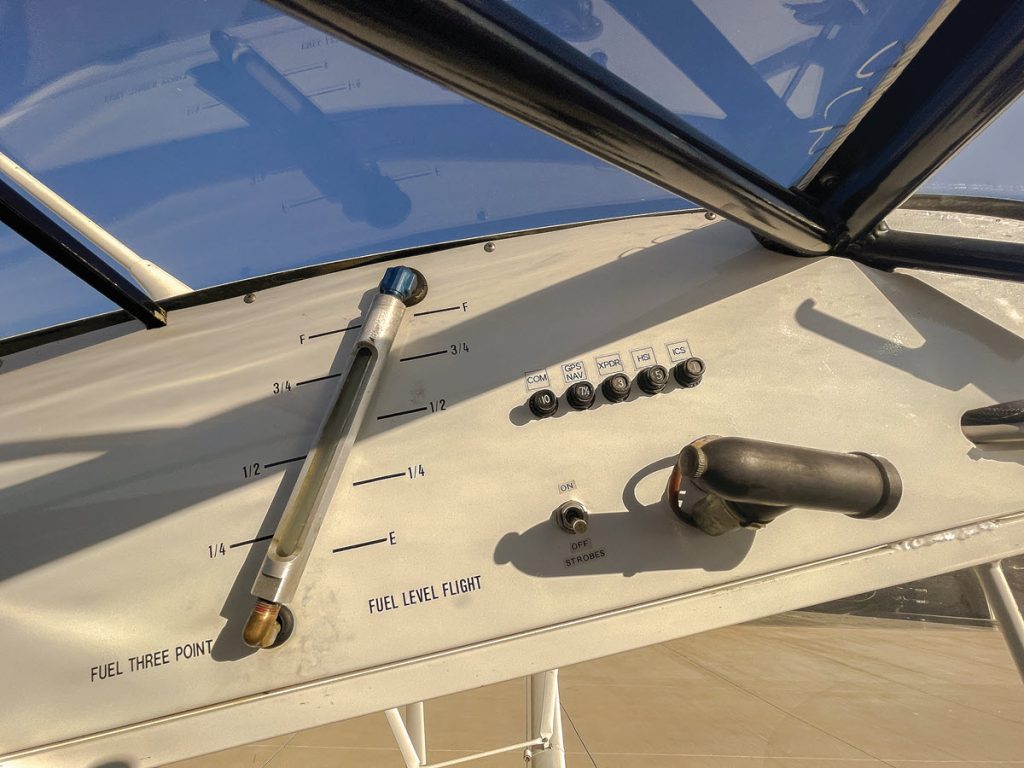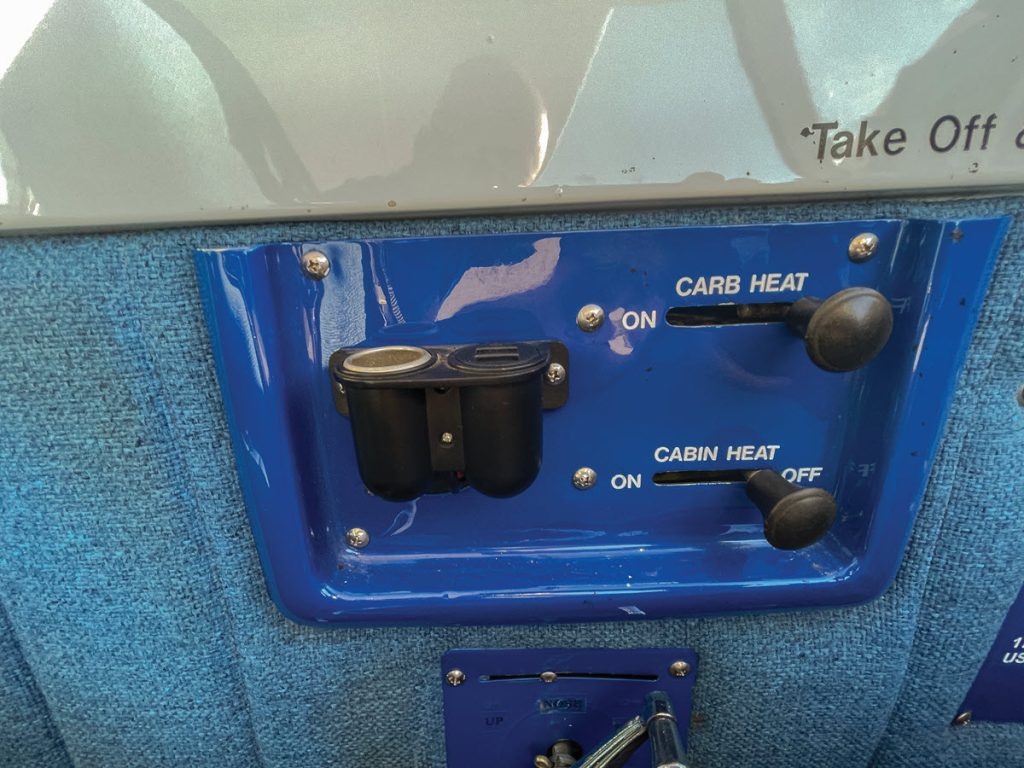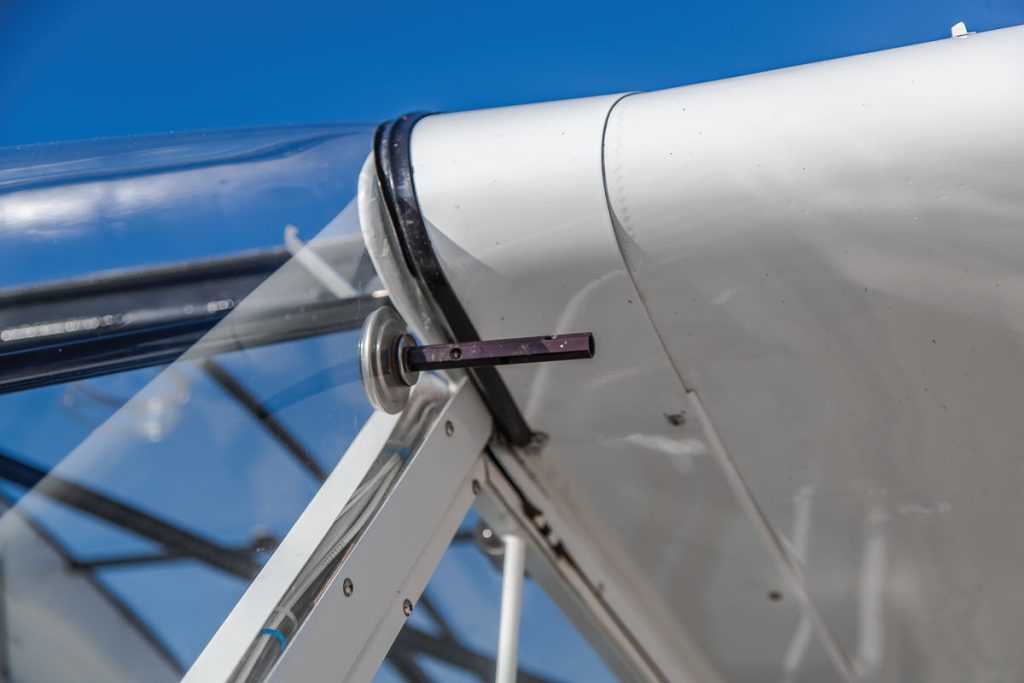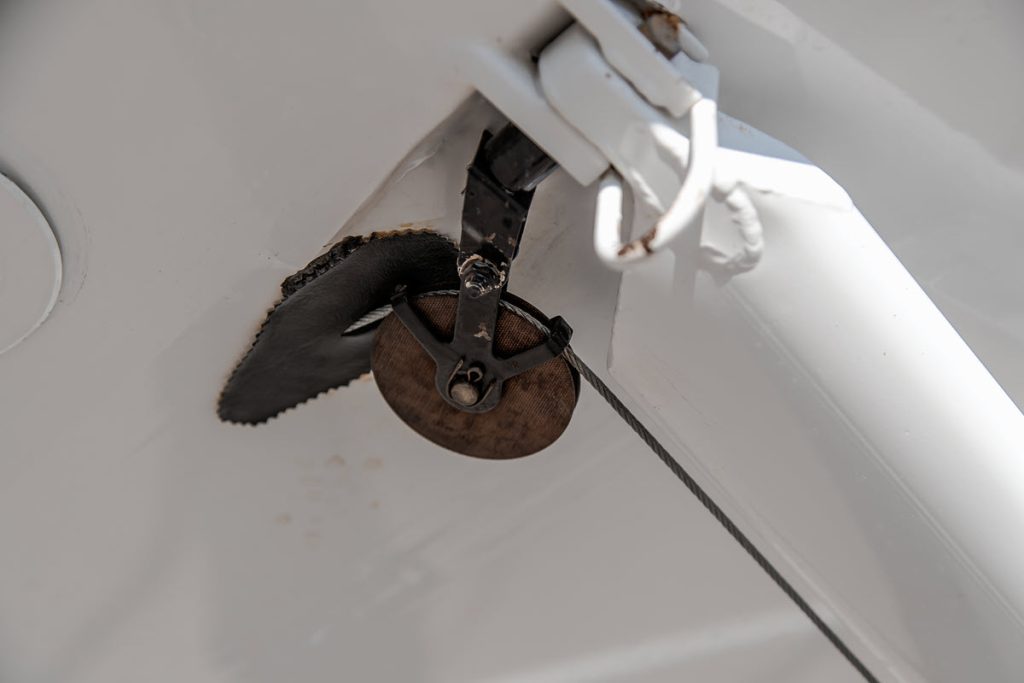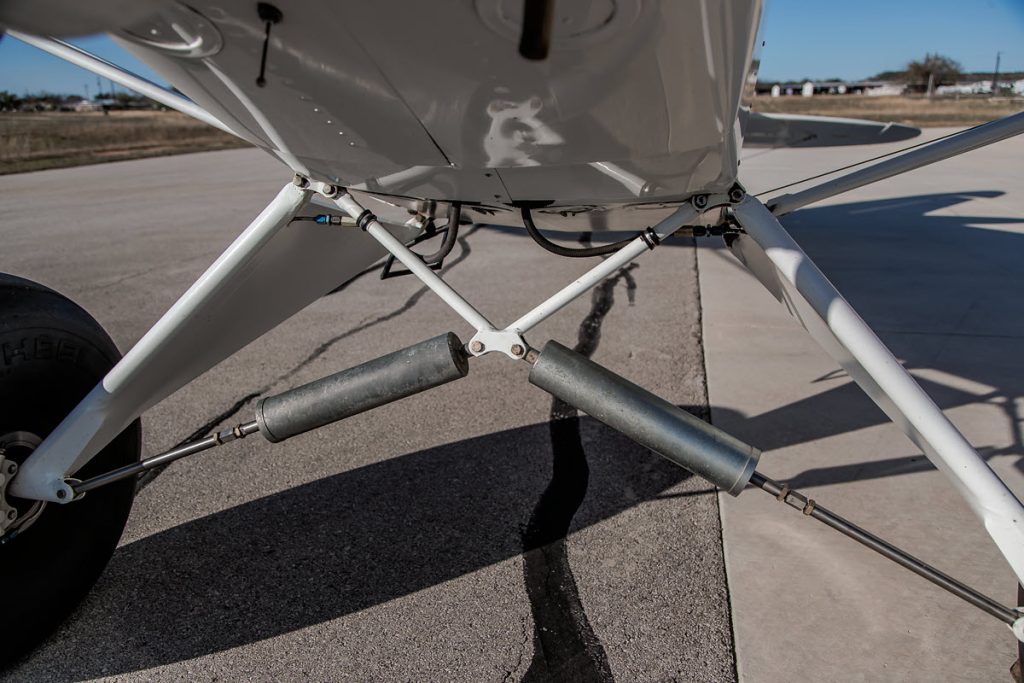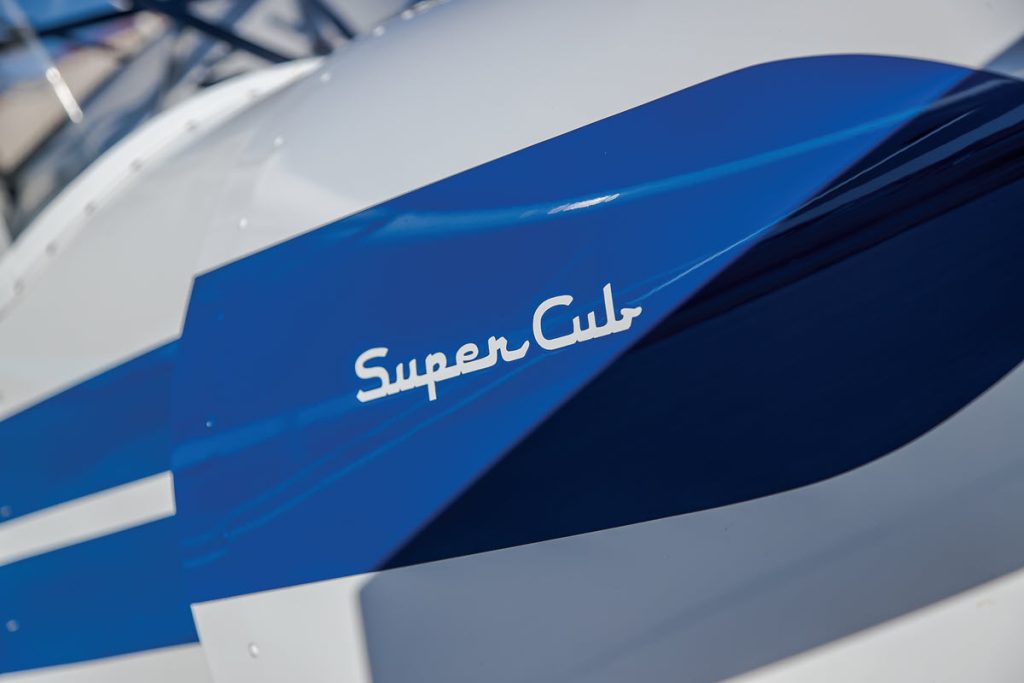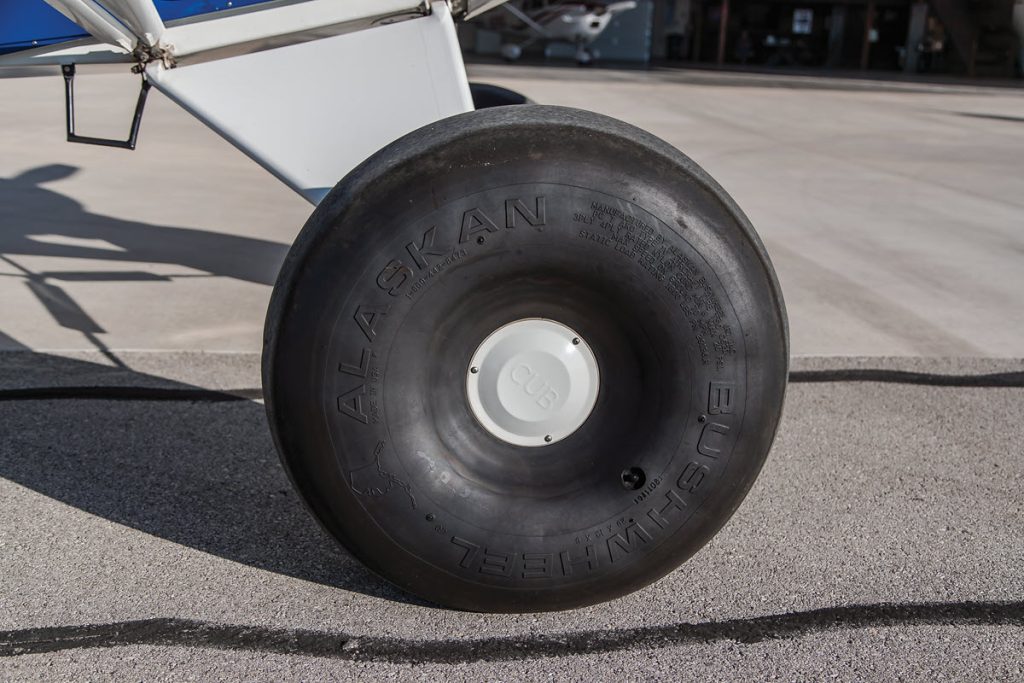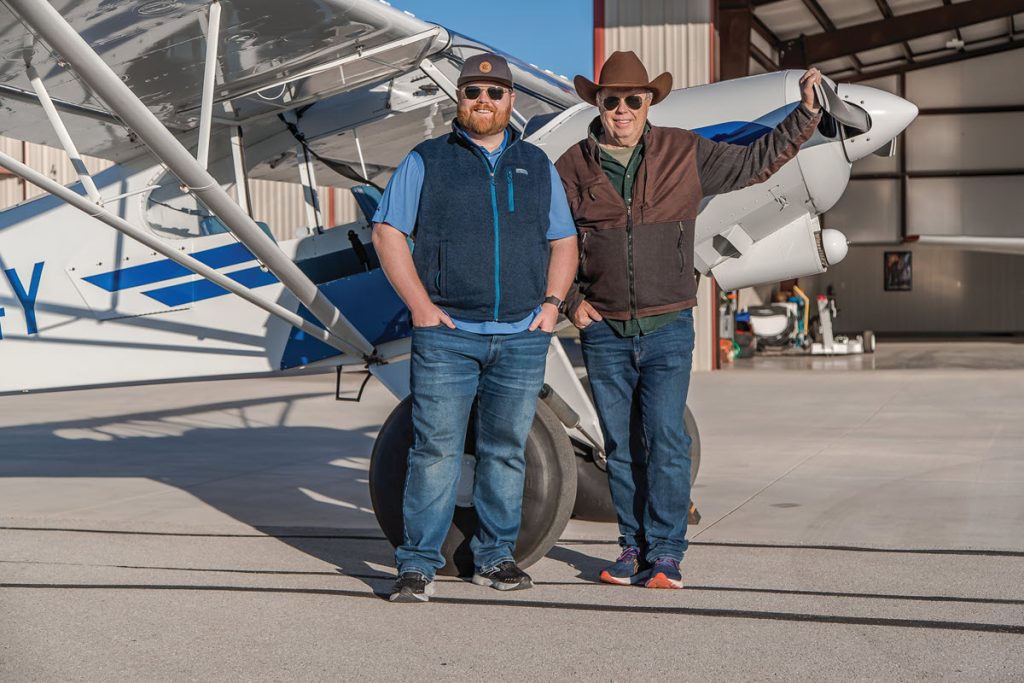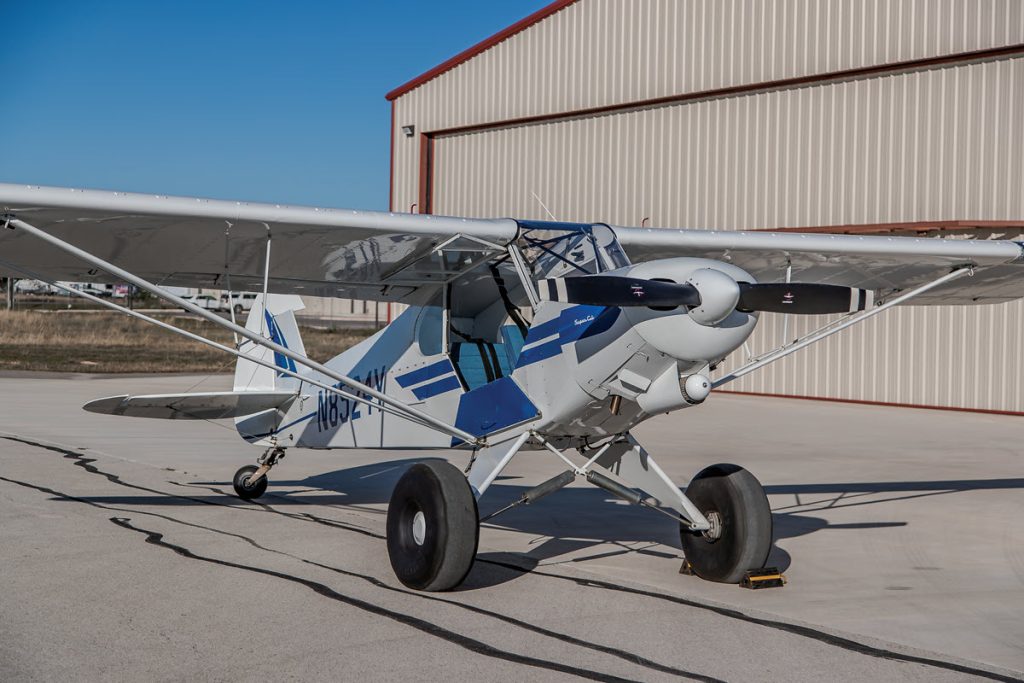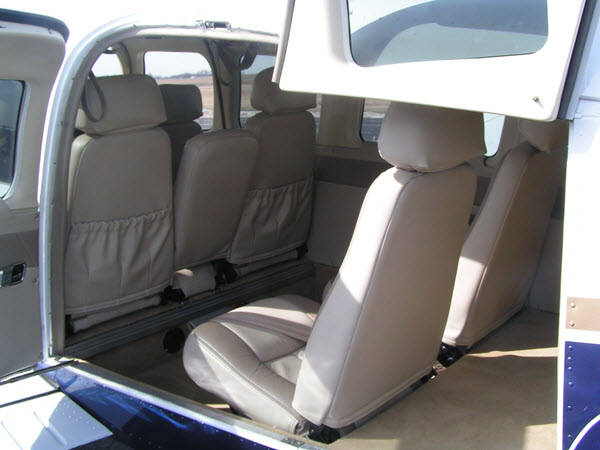Trailblazing Son follows in Dad’s Footsteps
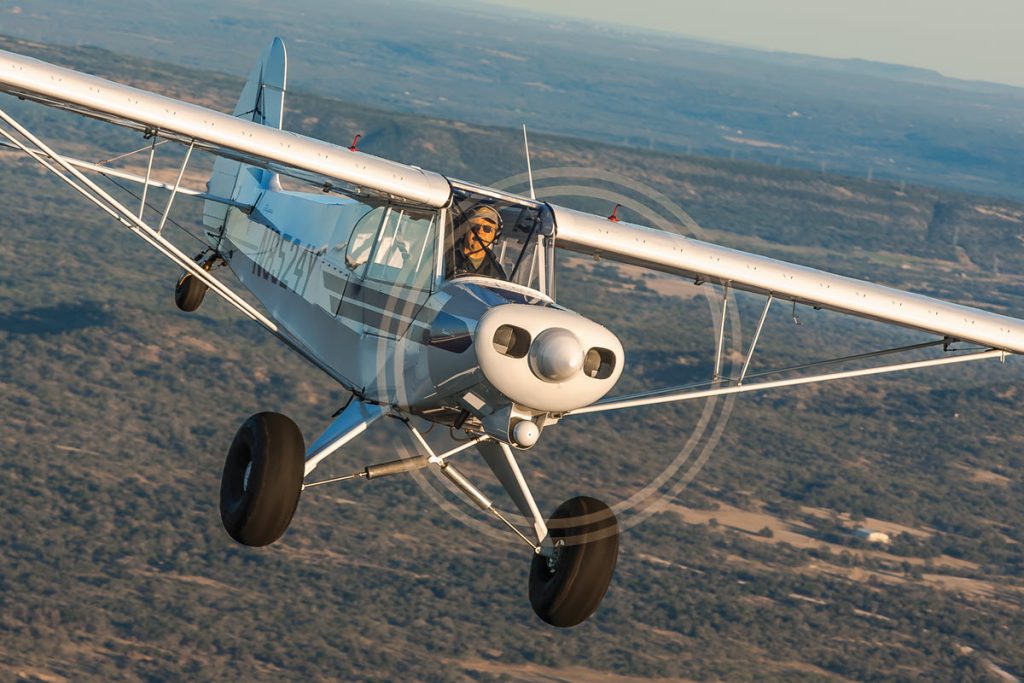
By Dan Brownell
David Gasmire is a successful healthcare executive and GA pilot who, from an early age, wanted to become an airline pilot. Although that didn’t happen, David was able to make his mark in aviation. “I always dreamed of being an airline pilot since I began flying as a teenager. The bars on the shoulders from the left seat was a lifelong hope for me. However, the timing of flight school availability and airline hiring never lined up for me. Either the airlines weren’t hiring, or the flight schools were financially out of reach for me.”
That didn’t stop David from achieving many other aviation accomplishments. In fact, he now has 4,000 hours with a private SEL and SE seaplane rating, a commercial ME instrument rating, and a single pilot type rating in a Citation 525. He has owned 12 airplanes, including two Skylanes (normally aspirated and turbo), three Bonanzas (E35, A36, G36), a Cirrus SR22T, a Baron G58, a Piper Arrow (his first airplane, in which he learned a lot about how an airplane actually runs), a brief partnership in a Boeing Stearman, a TBM 930, a Citation M2, and a Piper Super Cub. David has also ordered and expects delivery of a new 2023 Bonanza G36 in the fourth quarter of this year. It will be the fourth Bonanza he has owned and operated.
David took his aviation ambitions beyond becoming a pilot to playing an important role in improving GA safety. “I have participated in safety seminars and pilot owner groups for more than 30 years,” he said. “And I was most recently involved with the Safe to Land project, conducted by the Presage Group and sponsored by Citation Jet Pilots Association, Flight Safety, and Textron Aviation, to improve the landing safety record of private jets. I have trained at Flight Safety in Wichita and SimCom in Orlando for the Citation and the TBM. In the past, I trained at Flight Safety for even the Bonanza and the Baron, all great initial training and recurrent training.”
But David’s appreciation of the critical importance of safety and professionalism didn’t come about until his later years in the cockpit. “It wasn’t until I got into turboprop and turbine training at Flight Safety and SimCom that I realized that not being an airline pilot didn’t change my responsibility of flying like a pro,” he said. “The opportunity for every owner/operator to treat their personal flying as a professional flight department, with discipline and passion and with aviator accountability, can become a new mission of its own, a personal rating, so to speak.”
David’s participation in the Safe to Land program was an eye-opener. “You would think that landing the airplane is just a routine event, expected at the end of every flight. But the data proves that the detailed elements of a safe landing can’t be ignored. An extra knot too fast, and extra 100 feet too high on the approach, wings not in a stable approach configuration, centerline drift, flaps late to the party, a shorter runway, a tired pilot, an unexpected traffic alert, a big crosswind — all add up to the possibility of an incident.” That information is being used to enhance pilot training to help them avoid accidents.
“I currently have all the ratings that I want and need today, and I won’t be flying for the airlines or Part 135 operators, so my focus is on training and improving my stick and rudder skills as a pilot. I will continue to stay current in the Citation at Flight Safety, and I continue to fly in instrument conditions applying what I learned getting my ProCard from Flight Safety.”
Off to a Flying Start
David’s father, Richard Gasmire, introduced David to flying when he took him on a business trip from St. Louis to Detroit’s Willow Run airport in the early ’60s. “We flew on a large propeller airliner, possibly a Constellation. As an 8-year-old boy, it was exciting. The stewardess took me to meet the crew in the cockpit, pinned some TWA wings on my jacket, gave me a pack of Wrigley’s Doublemint gum, and I was hooked. I needed to fly all those switches and dials one day!
“Then a few months later my dad got me out of school early one day and took me to a grass airstrip somewhere in the St. Louis area. He had arranged for me to fly with a friend of his who had an airplane. That friend was retired captain Harold Eugene Little. I didn’t realize his credentials until after his death in 2003. He had flown F-84s and P-38s and was awarded five Bronze Stars for combat duty in the European Theater in World War II. I had no idea that my first flight — and in the left seat for goodness sakes — was with an American aviator hero!”
David wasn’t the only one in his family who was bitten by the flying bug. In 1969, his family moved to Dallas, Texas, where David’s father took flying lessons and ultimately bought a Cherokee.
“We fit all five of our family in that little Cherokee and took several family vacations in it,” David said. “I was relegated to the back seat with my brother and sister. When I was a junior in high school, I began to take flight lessons in that plane, paying for each lesson myself from money made on the weekends. I began flying one hour per month, as it was all I could afford. I also passed my written exam when I was 17 but never earned the hours to solo until I was married and out of college.
“During school at the University of North Texas, I worked at the Denton, Texas, airport (DTO) as a lineman. One of my roommates
was a private pilot, flying his dad’s Cessna 310. He and I would fly together using the school’s Piper Cherokee 140 from Denton to go visit my girlfriend at Baylor University. We would turn off the master switch while enroute so the Hobbs meter wouldn’t run. I could make the roundtrip flight for less than $20. The flight school let me get away with it as a company perk, but I still didn’t have my PPL.”
Following Dad’s Path
David’s son, Charlie, is a pilot and entrepreneur who founded Airplane Academy (airplaneacademy.com) in 2018 to bring more people into aviation and equip them for success. “I’m a third-generation pilot, so flying has always been a major part of my life,” he said. Charlie’s website has grown exponentially and now has more than 250,000 monthly views and 82,000 YouTube followers. In fact, it’s been so popular, Charlie has become somewhat of a celebrity and is often recognized at airports. But he’s adamant that becoming an internet star isn’t his goal. It’s to share his love of aviation and inspire the next generation of pilots.
Charlie’s success with Airplane Academy has a lot to do with his family’s deep roots in aviation and being raised in that environment from birth. He realizes how special it is to have that background. “I feel fortunate to have grown up in an aviation family,” he said. “I grew up with aviation bedtime stories, playing flight simulator on the computer, and making any makeshift fort I could around the house into an imaginary cockpit. It wasn’t until seventh grade that I took my first small airplane ride, when my dad was getting back into active flying, and they let me ride along for a demo ride in a new Bonanza. I still vividly remember that.
“My grandfather was no longer flying once I was born, but he helped my dad experience and fall in love with aviation, which is the same thing my dad did for me. My parents were both very supportive of flying, and I started taking lessons when I was 14. I soloed a Cessna 172 on my 16th birthday, which fell on a Sunday. The next day I went and got my driver’s license. So I legally flew by myself before I legally drove by myself.”
Passing the Passion for Aviation to the Next Generation
“When Charlie was very young, I would take him with me every time I could,” David said. “I was fortunate in that when we bought our ranch in Fredericksburg, Texas, I met a good friend, Bob Snowden, who was, and is, an aviation icon in the Texas Hill Country. As an instructor, Bob took a liking to young inspiring pilots, including Charlie. In 2003, I bought my 1970 Super Cub from Bob, and before Charlie had his PPL, he was getting dual in the Cub learning to fly a tailwheel, while he was learning to fly nosedragging 172s at American Flyers.

The Super Cub: A Super Plane
“The Super Cub is simply a wonderful airplane,” David said. “No gimmicks, just flies great and is a blast to fly. It’s outstanding on grass, as most tailwheel planes are, but I think it’s easy to get very connected to the airplane’s flying characteristics.
“My wife won’t let me buy a motorcycle, so the Cub is my weekend motorcycle. It’s great solo or with a rear passenger aboard. I fly a lot with local friends in formation trips around the Texas Hill country, East Texas to Reklaw, and up to Arkansas, where there are some fabulous grass strips to explore.
“The Super Cub is also easy to work on. You can get to things that need attention. I recently upgraded the panel, the landing gear and tires, and the prop, so she’s now pretty beefy as a bush airplane.”
The Piper Line
“Pipers make excellent trainers but can also hold their own as cross-country airplanes. I first learned in Pipers and grew to like the landing characteristics of the low-wing design, particularly in the flare. When it’s time to get on the pavement, the Piper wing will let you down nicely without the excess float that can occur on high-wing airplanes.
“I also like the visibility that Pipers provide, and that includes all the way up the line to the Meridian. The visibility is great. But with any low-wing design, you may be sitting in the sun, particularly on the ramp, waiting to get airborne. I remember a lot of sweaty flights that began getting heated up on the ground.”
Pipers and Cessnas: All in the Family
Although it’s common for those who trained in a Cessna to stick with flying Cessnas, and those who trained in Pipers to stick with Pipers, David and Charlie’s family have flown such a broad variety of planes that they don’t limit themselves to a particular maker, and it doesn’t seem odd for them to be flying “rival” plane types. It felt natural for David to fly in formation with Charlie’s 182 for this issue’s cover photo shoot by Jack Fleetwood.
David especially loves his 1970 Super Cub, which he has owned for 20 years. “I bought it in 2003,” David said. “It had been used as a towplane in Arizona but was wrecked when it went through a fence during towing operations.” The airplane was restored by Long’s Aircraft in Coleman, Texas, and David bought it shortly after that. “I have a picture of Charlie sitting on the wheel of the Cub when he was just a lad. It was my first tailwheel airplane, and I had about 2,000 hours at the time, mostly in Bonanzas and 182s.
The Importance of Understanding How Your Plane Works
“I wish someone would have told me how important it is to have a good, basic understanding of airplane systems when I bought my first airplane, a 1968 Piper Cherokee 180-hp Arrow,” David said. “We spend almost all our time learning how to fly the airplane and virtually no time understanding mechanically what keeps it in the air. Add to that the fact that most new pilots are renting airplanes, so they have no idea of the mechanical history of that particular airplane or where that specific airplane’s gremlins are, and you have the perfect recipe for a new pilot experience that they really didn’t have on their bucket list.
“I think every experienced pilot has at least a short list of examples they can attest became problems in the air. I learned about a runaway trim after takeoff in a Bonanza and about the electrical system of a 1954 Bonanza, resulting in pumping the gear down and landing at a private strip with the cylinder head temps in the red. I’ve learned about how fuel bladders can fail at 7,000 feet over the Colorado desert, and I’ve learned the value of a thorough preflight by seeing an engine cowling come partially unlatched during flight.
“I’ve also learned about what happens when the engine begins to quit in flight. The key is to understand how an emerging event can happen in the first place. Understanding the mechanics so you can understand the symptoms better is huge. Without knowing how the engine and all the related systems work, it would be hard to understand the significance of what is occurring. Low oil pressure for example — what it means, how it can happen, and what you should do about it all while still aviating, navigating, and communicating.
“Over the years, the amount of information for situational awareness has greatly improved, but that’s no substitute for safely flying the airplane. I have pilot friends who are also their own mechanics. They’re great guys to fly with because they’re great resources to help solve problems. But I think all of us have the responsibility to thoroughly understand what keeps the motor turning and the airplane flying. Smart people like solving problems, and even smarter people like knowing how to prevent those problems in the first place.”
Conclusion
David Gasmire’s perseverance in pursuing aviation has been rewarded. As a young man, he couldn’t afford flight school for a career as an airline pilot, but he didn’t stop taking advantage of every opportunity that came his way. Over the years, he has owned a dozen airplanes and earned multiple certificates, inspiring his son to become a pilot who passes on that spirit to others through Airplane Academy.
Charlie Gasmire’s Airplane Academy
An Aviation Education Destination
Charlie’s website is evolving but it’s primarily composed of three elements: A YouTube channel, a blog, and a step-by-step course for pilots on how to buy an airplane, especially the first time.
“In 2016, I purchased my first airplane, a 1975 Cessna 182P, which was a dream come true for me,” he said. “Airplane ownership has taught me so much about aviation and has really brought to life some of the lessons in training that I had a hard time practically applying.
“I want more people to become pilots and own their own plane, so a few years ago I just started sharing the things I’ve learned along the way and tried to encourage other people to take practical steps towards accomplishing those two things.”
The YouTube Channel
Airplane Academy’s YouTube channel covers everything from unique flying experiences to sharing lessons Charlie has learned from experience and what he wished he had known sooner. “I’m currently getting about 1,500 new YouTube subscribers per month. The only importance I really give that metric is that it tells me how much (or little) I’m helping people. If I’m producing content that people find more helpful or less helpful, it will show itself in the data. I can use that as a barometer to determine the content that’s resonating with the audience and tell me where I can help the most.
“The feedback I’ve been receiving has been very positive, and what people seem to really like is that I try to be honest about my mistakes and the things I struggle with as a pilot and aviation hobbyist. It’s easy to look at other people on YouTube and think they know everything, but that can have the opposite effect of the video’s intent. Instead of motivating the audience to dive into aviation, it can leave them discouraged, thinking they don’t have what it takes. In my videos, I try to share my struggles and things I’m learning to encourage others that they’re not alone.”
The Blog
Charlie’s blog (airplaneacademy.com/blog) covers aviation and training questions he was wondering about himself or that other people asked him in emails and YouTube comments. “If there was a good resource already out there, I’d send them there. If there wasn’t an easy-to-understand, yet detailed resource out there, I created it myself and put it on the blog. There are about 100 articles on there currently and I’ll be adding to that over time,” Charlie said.
“A lot of my audience is on the newer side of their aviation journey, but I try to share lessons I’m learning that could be helpful to more experienced pilots, too. The blog in particular covers some more advanced topics as well. I have some accomplished pilots and engineers that contribute on the site, and they’re able to address topics they know more about than I do. There’s a lot of helpful info there.”
The Airplane Buying System
The Airplane Buying System class is a 30-video course in which Charlie took months to document his airplane buying journey and interviewed flying mentors and industry experts (brokers, aviation accountants, insurance agents, etc.) to share their expertise as well.
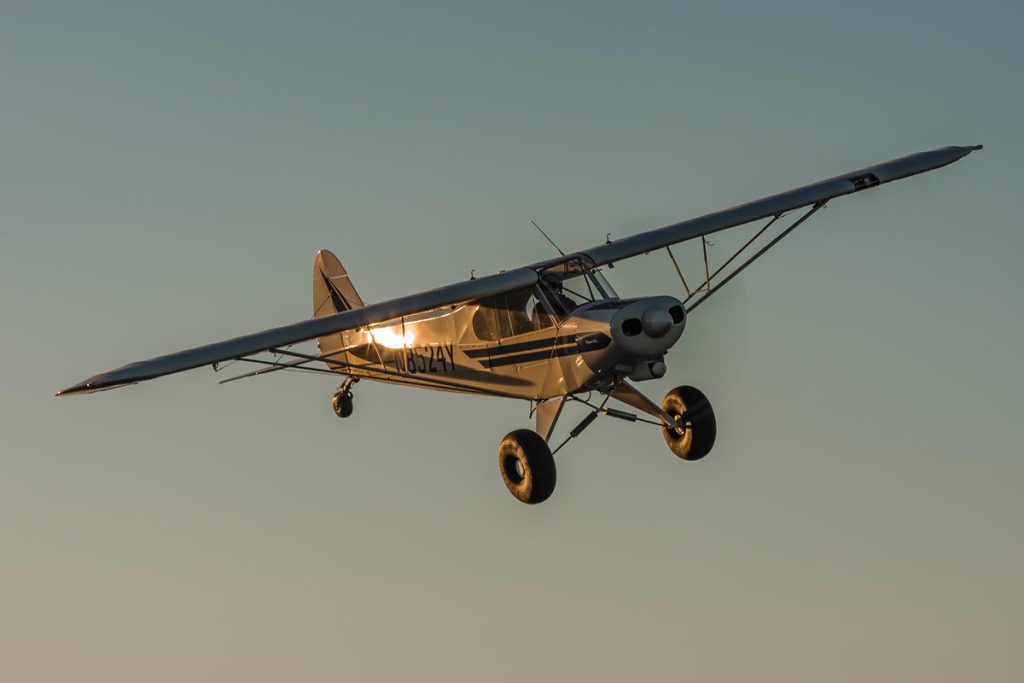
| Engine: | Lycoming O-320-A2A |
| Horsepower: | 150 |
| Top Speed: | 130 mph (113 kts) |
| Cruise Speed: | 115 mph (100 kts) |
| Economy Speed: | 100 mph (87 kts) |
| Fuel Capacity: | 36 gal |
| Range: | 460 nm (@ cruise) |
| 690 nm (@ economy) | |
| Gross Weight: | 1,750 lbs |
| Empty Weight: | 930 lbs |
| Ave. Useful Load: | 820 lbs |
| Takeoff Ground Roll: | 200 feet |
| Takeoff Over 50 ft Obstacle: | 500 feet |
| Landing Ground Roll: | 350 feet |
| Landing Over 50 ft Obstacle: | 885 feet |
| Rate Of Climb: | 960 fpm |
| Ceiling: | 21,300 feet |
| Doors: | 1 passenger |
| Seats: | 2 standard |
| Dimensions (all approx.) | |
| Fuselage Length | 22.5 feet |
| Fuselage Height | 6.7 feet |
| Total Wingspan | 35.3 feet |
All vintage planes are different. Do not use these to plan a flight. Source: Standard Catalog of Piper Single Engine Aircraft (Piper Owner Society).
Select a photo to open a pop-up slide show
